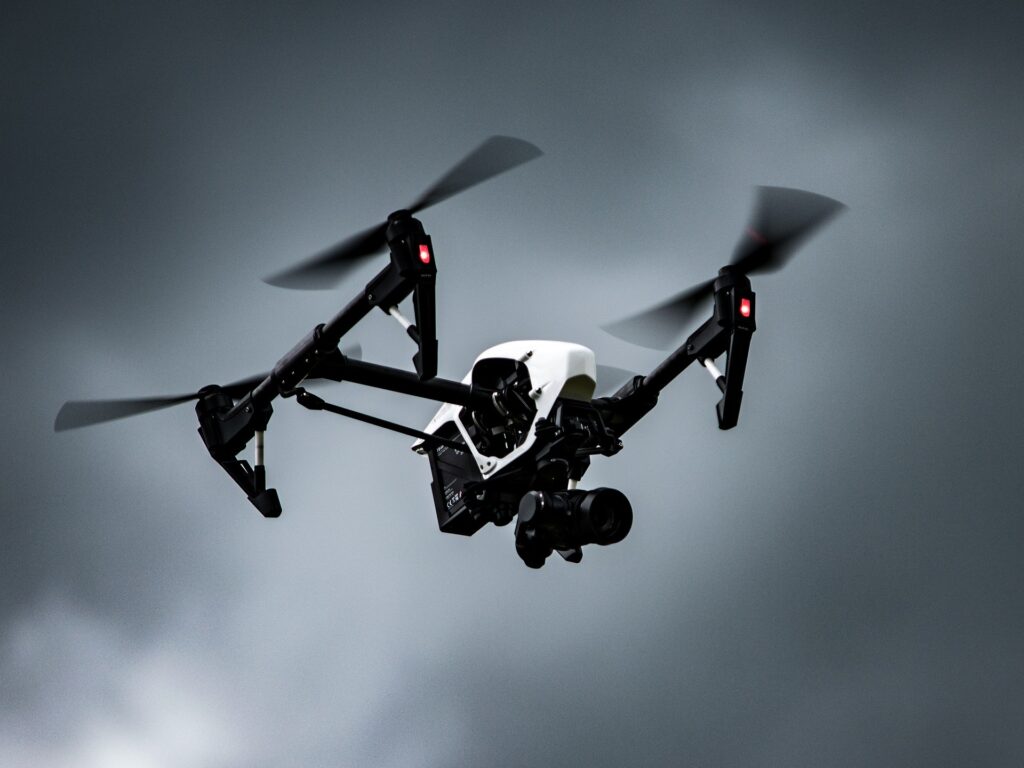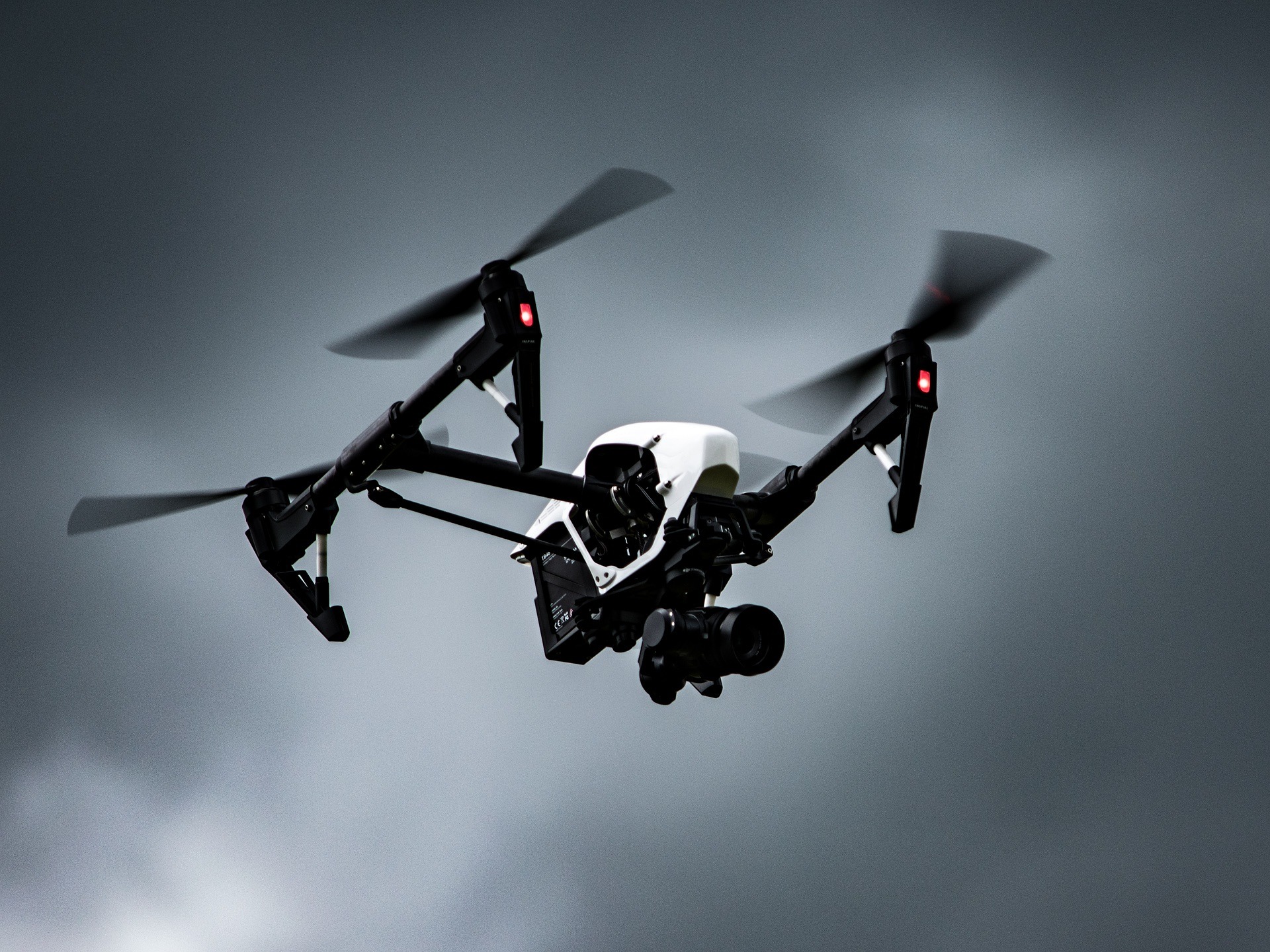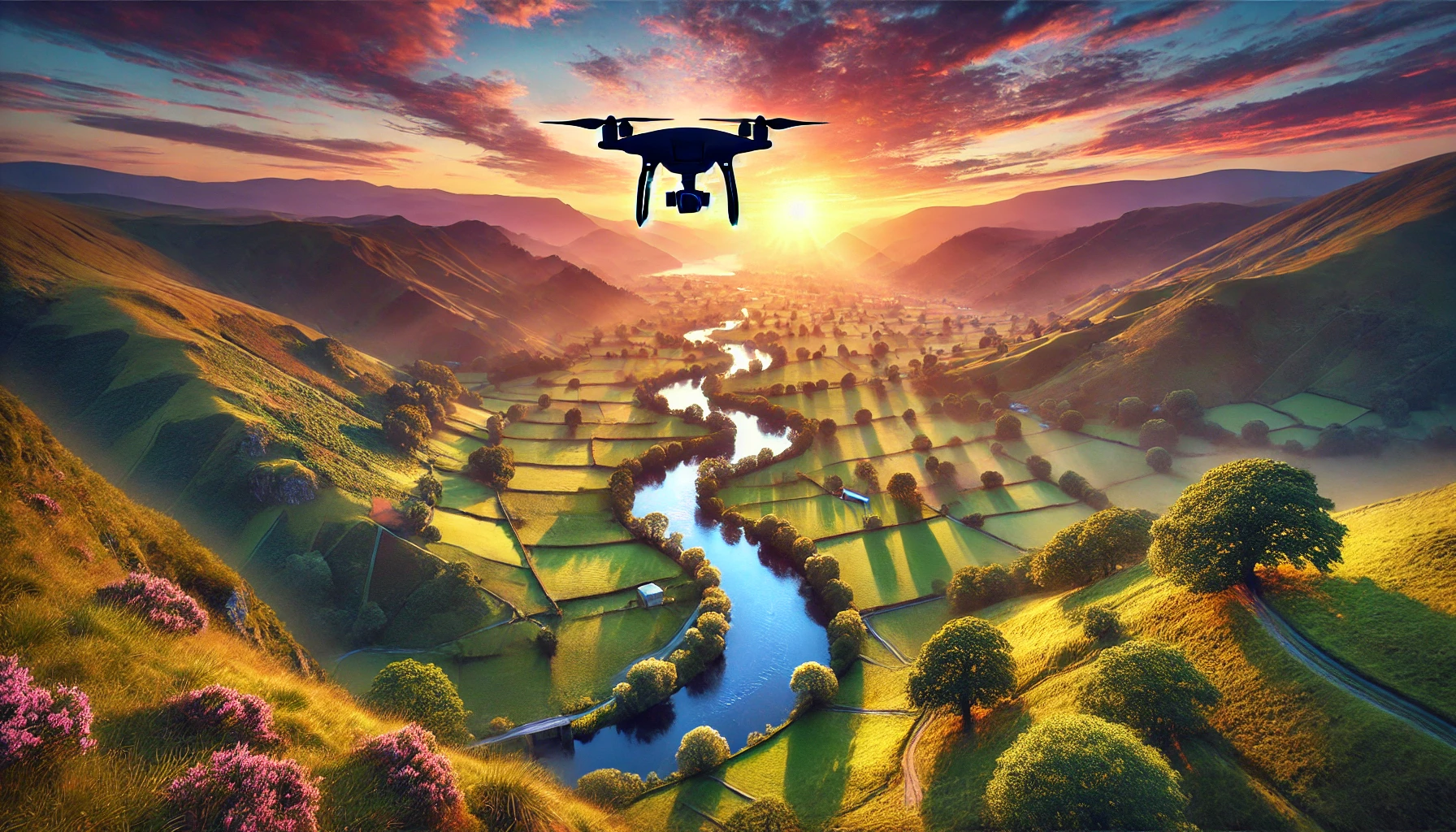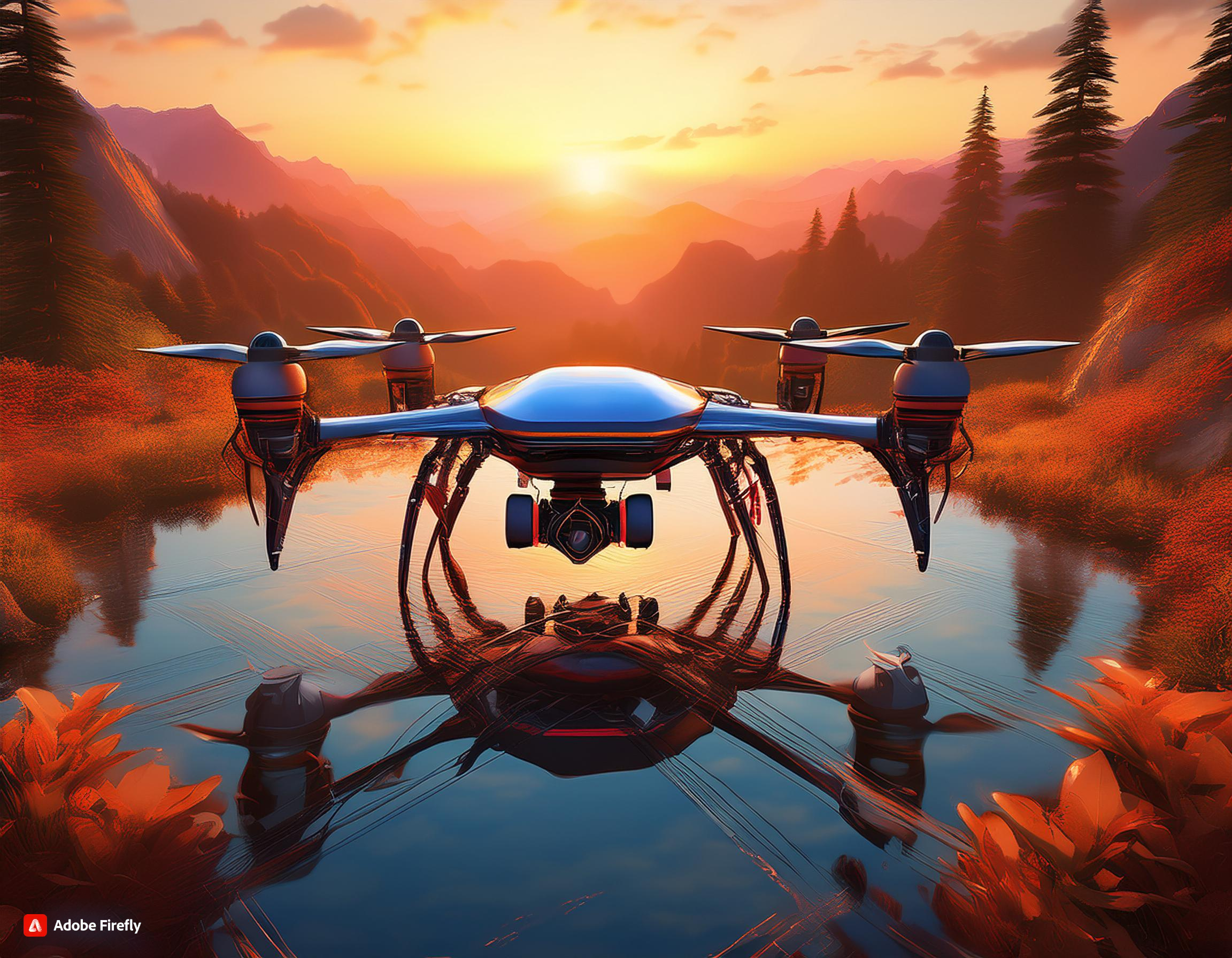
Introduction
In recent years, the real estate industry has undergone a significant transformation, largely driven by technological advancements. One of the most impactful innovations has been the use of drones. These unmanned aerial vehicles (UAVs) have become essential tools for real estate professionals, offering unique perspectives that traditional photography cannot match. By providing aerial views of properties, drones enhance listings and enable potential buyers to appreciate the scale and surroundings of a property in ways that flat images simply cannot convey.
Aerial photography and videography have revolutionized property marketing, allowing agents to showcase homes, commercial spaces, and land from breathtaking heights. This not only highlights the property’s unique features but also offers insight into the surrounding environment—such as proximity to schools, parks, and other amenities. High-quality drone footage can create captivating virtual tours, making listings more engaging and informative. In a competitive market, properties that leverage aerial imaging often stand out, drawing more interest and increasing the likelihood of a quicker sale.
The purpose of this article is to provide a comprehensive guide on the best drones specifically designed for real estate purposes. We will explore various models that cater to different needs, budgets, and skill levels, ensuring that real estate professionals can find the perfect drone to elevate their marketing efforts and improve client engagement.
Benefits of Using Drones in Real Estate
A. High-quality Aerial Imagery and Video
One of the primary benefits of using drones in real estate is their ability to capture high-quality aerial imagery and video. Drones equipped with advanced cameras can provide stunning visuals that enhance property listings significantly. Enhanced property views allow potential buyers to see the layout of the land, the flow of outdoor spaces, and the relationship between various structures, making it easier to envision how they might use the space. Furthermore, for larger properties and expansive landscapes, drones are invaluable. They can cover vast areas in a single shot, allowing viewers to appreciate features like gardens, pools, and recreational spaces that might be overlooked in traditional ground-level photography.
B. Cost-effective Marketing Solutions
In comparison to traditional photography and videography, drones offer a cost-effective solution for marketing properties. While hiring a professional photographer can be expensive, particularly for expansive estates that require multiple angles and setups, drone services often come at a fraction of the cost. Additionally, the engaging and visually appealing content produced by drones can lead to increased engagement with listings. Properties featuring captivating aerial footage tend to attract more views, encouraging potential buyers to invest their time in exploring the listing further. This enhanced engagement can ultimately result in a faster sales process and a higher likelihood of achieving a favorable sale price.
C. Unique Perspectives
Drones provide unique perspectives that can highlight architectural features and capture the essence of a neighborhood in ways that traditional photography cannot. By offering bird’s-eye views, drones can showcase the design elements of a property, such as roof lines, outdoor spaces, and landscape features. Furthermore, they allow real estate agents to capture the amenities of the surrounding neighborhood—like parks, schools, and shopping areas—which can significantly influence a buyer’s decision. This ability to portray both the property and its context not only helps potential buyers visualize their future home but also creates a compelling narrative that enhances the marketing appeal of the listing.
Key Features to Consider When Choosing a Drone
A. Camera Quality
When selecting a drone for real estate purposes, camera quality is paramount. The resolution and megapixels of the camera directly influence the clarity and detail of the images captured. A higher megapixel count allows for sharper images, which are essential for showcasing properties. Additionally, video capabilities play a crucial role; drones that can shoot in 4K resolution provide stunning visuals that can elevate marketing materials. Frame rates also matter, as higher frame rates allow for smoother video footage, which is particularly beneficial when capturing moving shots of properties or landscapes.
B. Flight Time and Range
Flight time and range are critical factors to consider when choosing a drone. Battery life varies significantly among models, impacting how long a drone can operate before needing to recharge. For real estate photography, it’s essential to have sufficient flight time to cover expansive properties without interruptions. Moreover, the maximum distance a drone can travel while maintaining a reliable connection is vital for effective coverage, especially for large estates or rural properties. A drone with a longer range allows for more flexibility in capturing various angles and perspectives.
C. Stability and Ease of Use
Stability and ease of use are essential features for both novice and experienced drone pilots. Drones equipped with GPS and obstacle avoidance systems can enhance stability, allowing for smooth flight and precise hovering. These features are particularly beneficial when capturing images and videos, as they help maintain focus and avoid potential accidents. Additionally, user-friendly controls and software can make the flying experience more intuitive, enabling users to focus on capturing high-quality content rather than grappling with complicated controls.
D. Portability and Design
The design and portability of a drone are also important considerations, especially for real estate professionals who may need to transport equipment to various locations. Lightweight and compact drones are easier to carry and can be quickly deployed for aerial photography. Build quality and durability should not be overlooked; a well-constructed drone can withstand the rigors of travel and outdoor use, ensuring longevity and reliable performance.
E. Additional Features
Many drones come with additional features that can enhance the overall experience and functionality. Live streaming capabilities allow real-time sharing of aerial views, which can be particularly useful for virtual tours or open houses. Smart modes, such as “follow me” and “point of interest,” provide advanced filming techniques that can create dynamic content effortlessly. These features can help real estate agents craft compelling narratives around properties, ultimately attracting more potential buyers.
Top Drones for Real Estate
A. DJI Mavic Air 2
Key Specifications:
- Camera: 48 MP, 4K video at 60 fps
- Flight Time: Up to 34 minutes
- Range: 10 km
- Weight: 570 grams
Pros and Cons:
Pros: The DJI Mavic Air 2 offers impressive image quality with its high-resolution camera and 4K video capabilities. Its compact design makes it highly portable, and the extended flight time allows for comprehensive coverage of large properties.
Cons: While it boasts many advanced features, some users may find the lack of advanced obstacle avoidance systems limiting for more complex flying environments.
Ideal Use Cases: This drone is ideal for real estate agents looking for a balance between portability and high-quality imaging, making it perfect for residential listings and small commercial properties.
B. DJI Phantom 4 Pro V2.0
Key Specifications:
- Camera: 20 MP, 4K video at 60 fps
- Flight Time: Up to 30 minutes
- Range: 7 km
- Weight: 1,388 grams
Pros and Cons:
Pros: The Phantom 4 Pro V2.0 is known for its exceptional camera quality and robust build. It features advanced obstacle avoidance and a gimbal-stabilized camera, ensuring smooth footage even in windy conditions.
Cons: Its larger size and weight can make it less portable than some other options, and it comes at a higher price point.
Ideal Use Cases: This drone is best suited for high-end real estate listings and large properties where image quality and stability are paramount. It’s also a great choice for agents who often work in diverse environments.
C. Autel Robotics EVO Lite+
Key Specifications:
- Camera: 50 MP, 6K video at 30 fps
- Flight Time: Up to 40 minutes
- Range: 12 km
- Weight: 820 grams
Pros and Cons:
Pros: The Autel EVO Lite+ offers incredible image resolution and video quality, along with an impressive flight time. Its lightweight design and foldable structure make it convenient to transport.
Cons: While it features good obstacle avoidance, some users report that the software interface can be less intuitive than competitors.
Ideal Use Cases: This drone is ideal for agents needing high-quality visuals for marketing, especially in competitive markets where standout imagery is crucial. It’s also suitable for large outdoor properties due to its extensive range and flight time.
D. Parrot Anafi USA
Key Specifications:
- Camera: 32 MP, 4K HDR video
- Flight Time: Up to 32 minutes
- Range: 4 km
- Weight: 500 grams
Pros and Cons:
Pros: The Parrot Anafi USA features a unique 180-degree tilt gimbal that allows for creative angles and unique shots. It’s lightweight and easy to transport, making it user-friendly for on-the-go agents.
Cons: Its range is shorter compared to other drones in this list, and some users may find the camera quality slightly inferior to higher-end models.
Ideal Use Cases: This drone is ideal for agents who want versatility in their shots, particularly for smaller properties or urban environments where portability and innovative angles can set their listings apart.
E. Skydio 2
Key Specifications:
- Camera: 12 MP, 4K video at 60 fps
- Flight Time: Up to 23 minutes
- Range: 3.5 km
- Weight: 775 grams
Pros and Cons:
Pros: The Skydio 2 excels in autonomous flying, with advanced obstacle avoidance capabilities that make it exceptionally user-friendly. It’s perfect for those who may not have extensive flying experience.
Cons: The camera quality is good but not as high as some competitors, and its shorter flight time may limit extensive shoots.
Ideal Use Cases: This drone is perfect for real estate professionals who prioritize ease of use and safety, especially in challenging environments. It’s well-suited for capturing dynamic footage around properties, making it an excellent choice for engaging marketing content.
Tips for Capturing Stunning Real Estate Aerial Shots
A. Planning Your Shots
Planning your shots is crucial to capturing stunning aerial imagery for real estate. One of the best times of day for lighting is during the golden hour—shortly after sunrise or before sunset—when the light is soft and warm, adding a pleasing glow to your images. This natural light enhances the property’s features and minimizes harsh shadows. Additionally, identifying key features to highlight, such as landscaped gardens, pools, and unique architectural elements, is essential. Before flying, create a shot list and visualize the angles that will showcase the property effectively, ensuring a comprehensive presentation that attracts potential buyers.
B. Using Editing Software for Enhancement
Once you’ve captured your aerial shots, using editing software can elevate your images and videos significantly. Popular tools like Adobe Lightroom and Photoshop for photos, and Adobe Premiere Pro or Final Cut Pro for videos, are widely used in the industry. Basic editing tips include adjusting exposure, contrast, and color balance to ensure the property looks its best. Additionally, cropping can help focus attention on key features, while stabilization tools can smooth out any shaky footage, creating a polished final product. Incorporating these editing techniques can transform good footage into eye-catching marketing materials that stand out in listings.
C. Understanding Local Regulations
Before operating a drone for real estate purposes, it’s essential to understand local regulations regarding drone usage. Many regions have specific laws governing where and how drones can be flown, especially in populated areas or near airports. Familiarizing yourself with these regulations will ensure compliance and safety during your shoots. Additionally, required permits may be necessary, particularly if you plan to fly in controlled airspace or conduct commercial operations. Always prioritize safety considerations, including maintaining a visual line of sight and respecting the privacy of neighbors, to avoid legal complications and foster a positive reputation in your community.
Conclusion
In conclusion, the benefits of using drones in real estate are numerous and impactful. From capturing high-quality aerial imagery that showcases properties in their best light to offering cost-effective marketing solutions that increase engagement, drones have become invaluable tools for real estate professionals. Their ability to provide unique perspectives that highlight architectural features and neighborhood amenities sets them apart from traditional photography, making properties more appealing to potential buyers.
Investing in a quality drone can significantly enhance your marketing strategy, providing you with the tools needed to create captivating visual content. Whether you’re focused on residential listings or large commercial properties, a well-chosen drone can elevate your marketing efforts and help you stand out in a competitive market.
As you consider the outlined options, think about your individual needs and preferences. Factors such as camera quality, flight time, and ease of use will play a crucial role in your decision-making process. Take the time to choose a drone that aligns with your goals, and start capturing stunning aerial shots that will undoubtedly attract more attention to your listings and drive successful sales.





